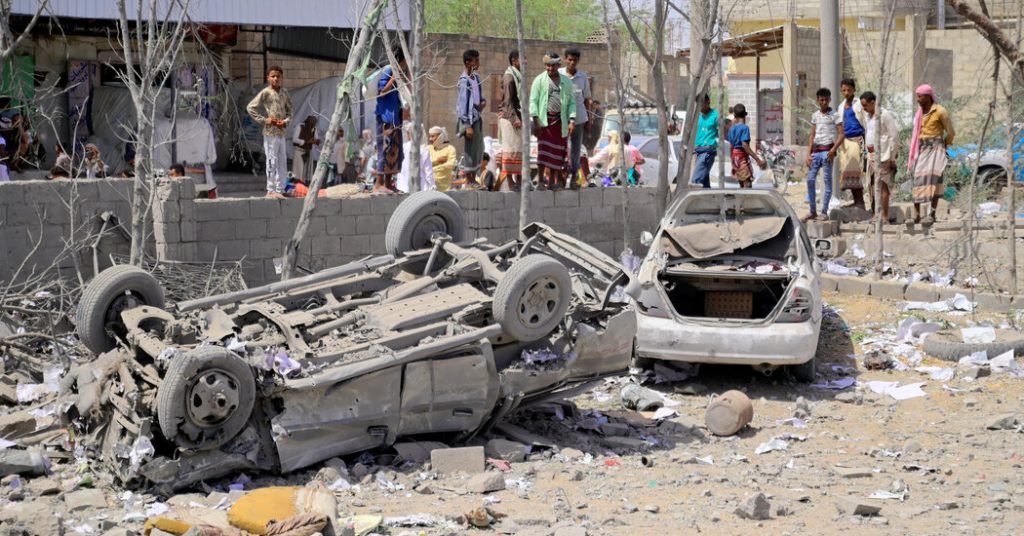US Military Operations Against Houthis: Overview
Since March 15, the US military has engaged in a large-scale offensive against the Houthi militants in Yemen, costing nearly $1 billion in less than three weeks. This initiative aims to curb the Iran-backed group’s capabilities which have been a growing concern for regional security, particularly in the Red Sea. However, reports indicate that the military strikes have had limited effectiveness in terms of achieving their objectives.
Recent briefings reveal that despite heavy expenditure on munitions—including JASSM long-range cruise missiles, GPS-guided JSOWs, and Tomahawk missiles—the operational impact has fallen short of expectations. Pentagon officials are reportedly facing a backlash, as the military campaign’s success is questioned amidst continuing Houthi operations and persistent missile attacks on maritime assets.
Cost of the US military’s operation against the Houthi militants in Yemen is nearing $1 billion with limited impact.

Escalation of Military Engagement
The operation has utilized significant military resources, revealing a shift in military policy under the Trump administration. Unlike the previous administration, which required higher-level approval for strikes, current CENTCOM Commander Erik Kurilla has been empowered to act independently. This change emphasizes a more aggressive approach to military engagement to ensure any strategic advantage against the Houthis.
Operational Effectiveness
Despite the ongoing airstrikes, the Houthis appear to retain a considerable underground arsenal, impacting the overall effectiveness of the military offensive. Reports indicate that while some Houthi leadership has been targeted, the group’s fundamental capabilities remain largely intact, enabling them to continue their operations, including missile launches against US drones and maritime vessels.
One critical assessment noted that while military action has led to the eradication of certain mid-level leaders—referred to as the group’s “middle management”—the operational surface still remains resilient due to substantial stockpiles and fortified positions. Military analysts are concerned about the lack of transparency regarding the true impact of the strikes.
Congressional Reaction and Funding Concerns
The cost and effectiveness of the military campaign have prompted a mixed reception in Congress. Officials suggest that the Pentagon might need to ask for supplemental funding to continue the operation, despite concerns that such requests may not find bipartisan support given the skepticism surrounding the campaign’s success.
Vice President JD Vance’s public remarks labeling the operation a “mistake” underscore the political divisions regarding military involvement abroad, adding pressure on military leaders who must justify the expenditure against given results. As military strikes continue, Pentagon witnesses emphasize the greater expenditure of long-range weapons and operational tempo, raising alarms about potential implications for readiness in the Indo-Pacific region.
International and Regional Implications
Beyond immediate operational concerns, the ongoing conflict has broader implications for US relations with its partners in the Middle East and the Indo-Pacific. The heavy use of high-tech munitions may have repercussions on US military capabilities and readiness if another conflict arises in different regions, such as with China.
Amid fears about the depletion of critical military resources, officials from Indo-Pacific Command have expressed reservations regarding the diversion of assets from their region, necessitating reassurance from CENTCOM leadership about operational preparedness should conflicts arise elsewhere.
Status of Houthi Operations
The Houthis have demonstrated resilience during this military offensive, continuing to execute drone strikes and missile launches. Recent reports noted that they successfully shot down multiple US Reaper drones, raising questions about whether the US military’s strategy is effectively countering this persistent threat.
While some briefings highlight a decrease in ballistic missile threats toward Israel, overall, the group’s operational prowess in targeting US assets remains a significant challenge. The Pentagon has described these strikes as part of a broader strategic assault to alleviate regional instability caused by ongoing Houthi actions.
Strategic Assessment Moving Forward
The ongoing assessment of military effectiveness against the Houthi group poses urgent questions concerning US strategy moving forward. As the one billion dollar investment draws scrutiny under the spotlight of public and legislative review, military planners will be compelled to refine their strategy against this resilient adversary.
Conclusion: The Path Ahead
Ultimately, the effectiveness of the US military’s operations against the Houthis will depend heavily on strategic recalibrations informed by operational lessons learned in this ongoing campaign. Through continued pressures on the Houthis and ongoing evaluations of approach, US forces can attempt to mitigate the threat posed by this group while maintaining a careful balance between resource allocation and readiness for future conflicts. As the situation evolves, one thing remains clear: the response to Houthi provocations may significantly shape broader regional dynamics in the Middle East in the years to come.

